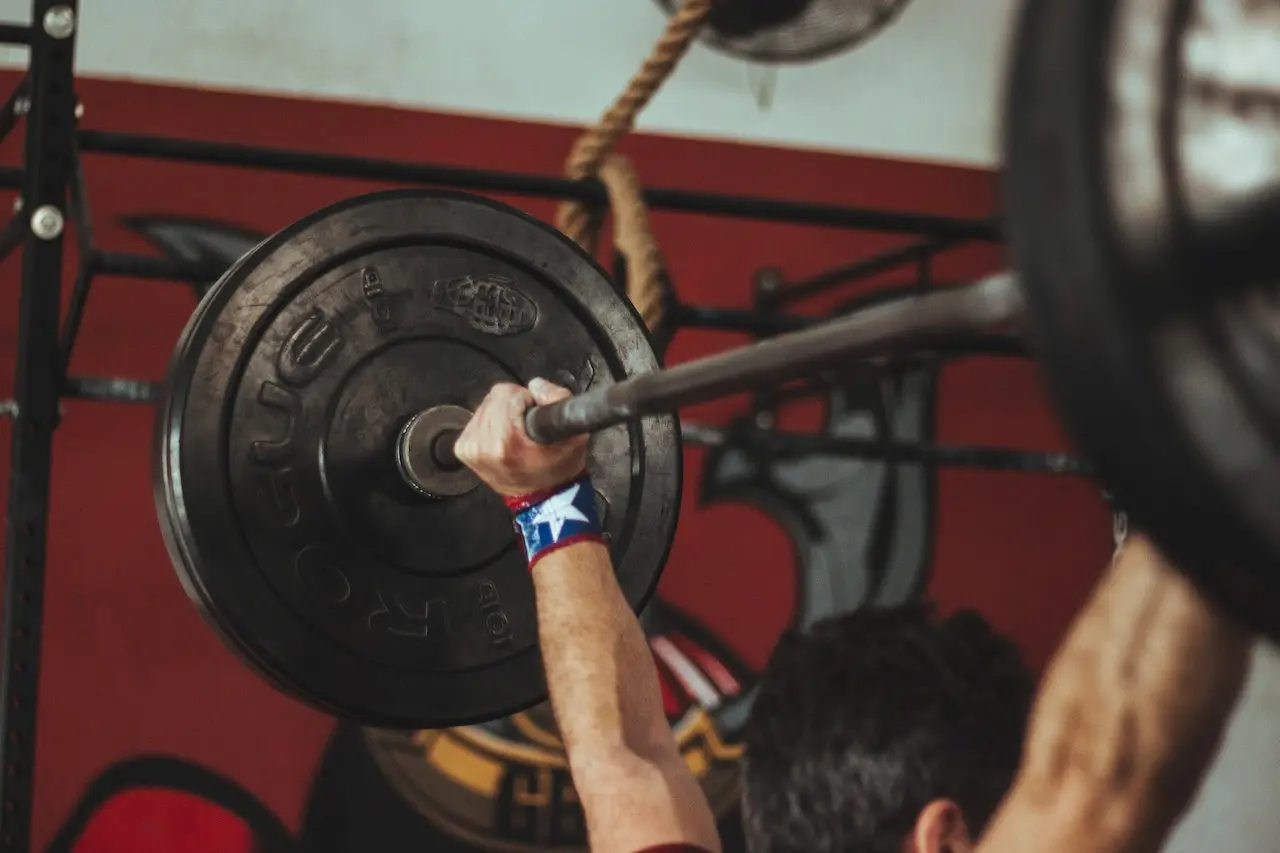Is A 9 Minute Mile Good? A 4-Week Training Plan to Achieve the Best Results
One of the best ways for beginners to keep track of their running progress is by their mile time. Is a 9 minute mile good for beginners? What are some good tips for running a mile in 9 minutes? Read on to find out if this is an attainable mile time for your current fitness level and everything else you need to know.
A 9 minute mile is a very good result for the average runner who is in good physical shape. Most beginners will complete a mile within a 12 to 15-minute timeframe. However, experienced runners who are committed to regular training can run a mile in 9 to 10 minutes.
Comparing 9 Minute Mile Times for Runners by Gender
Is a nine minute mile good? A 9 min mile is good for runners who have been consistently practicing. When it comes to running times, every individual runner will have a time that’s good for their fitness levels and physical conditions.
Everyone has different results. A 21-year-old professional runner will likely be able to run a mile in an average of 4 minutes. For them, a 9 minute mile wouldn’t be a good time. On the other hand, a 9 minute mile wouldn’t be realistic for a 44-year-old who doesn’t exercise regularly.
When it comes to recreational runners who practice every week, a 9 minute mile time is a good result. Let’s take a closer look at this result by gender.

1. Pace for Males: 9 Minute Mile
Is a 9 minute mile good for a man? The average running time for males between the ages of 16 to 24 is just over 9 minutes. This average takes into account men that don’t run on a regular basis. As men get older, their average mile time increases.
Now, if a man runs on a daily basis, a 9 minute mile is good for men under the age of 46. A study was taken on men’s mile speed. Out of the top 50% of males for each age group, men under the age of 30 were able to run a mile in under 9 minutes. In this same study, the top 50% of males from ages 32 to 46 had average mile speeds of 9:24 to 9:54.
Keep in mind, these results are from the top 50% of performers. The top 1% shows much different results. The top 1% of men aged 56 to 61 could run a mile in 7:39.
2. Pace for Females: 9 Minute Mile
Is a 9 minute mile good for a woman? A 9 min mile is very good for a physically fit woman. Women tend to have a slower average running speed than males. That being said, with regular training, it’s possible for females to run a 9 minute mile.
The study mentioned above was also performed on females. Unfortunately, the top 50% of women (from all age groups) didn’t get an average mile time under 9 minutes. However, the top 1% of performers did. Women 17 to 51 were able to complete a mile in under 9 mins.
9 Minute Mile Pace
How many mph is a 9 minute mile? The ideal 9-minute mile pace is 6.7 mph. For most runners, this will feel like a very fast-paced jog. But, if you’re just a beginner or only run occasionally, holding this pace may not be as easy as it sounds.
If you’re committed to running a 9 minute mile, it is a possible goal. However, it won’t happen overnight. You will need to follow a training routine and stick with it.

5 Tips How To Run A 9 Minute Mile
Running a 9 minute mile is a great goal for regular runners. But, if you wake up one day and decide you want to run a mile in 10 minutes, you won’t be able to put on a pair of running shoes and make it happen. You do need to train and prepare yourself to gradually meet this goal. Here are 5 tips to run a mile in 9 minutes or less.
1. Running Plan
If you want to improve your running speed, it’s important to follow a training plan. This should include various different running workouts throughout the week. Interval running is an excellent way to improve your speed. However, it’s not the only type of running you should do. Make sure your running plan also includes:
- Tempo runs;
- Sprinting;
- Fartleks;
- Progression runs;
- Incline runs;
- Long run (easy-paced run for 45 to 60 minutes).
Cross-training with running is an excellent way to improve your performance. It can also help to reduce your risk of injury while running.
2. Warm-Up & Cool Down
Always start and end your run on the right foot. A warm-up and cool-down are essential to prepare your body and prevent injury. The warm-up will raise your body temperature and get your blood flowing for the workout. A cool-down afterward will regulate your body temperature so you don’t get dizzy or risk fainting.
- Warm-up – 10 minutes of moderate-intensity running activities and joint warm-ups.
- Cool down – 10 to 15 minutes of light running and stretching.
3. Safety First
It’s important to put your safety first when running to reduce your risk of an injury. There are several things every runner should do to make sure they’re running safely.
- Gradually increase speed – if your current mile speed is in the 12 to 15-minute range (or higher) don’t expect to be running a 9 min mile by next week. Always aim to increase your speed by no more than 10% each week.
- Wear proper shoes – running shoes are flexible and durable. They are designed to keep your feet protected and supported during a run. You are less likely to injure your foot if you wear proper running shoes.
- Listen to your body – don’t push your body to go further than it can handle. If you’re feeling any kind of aches or pains during your run, it’s time to stop.
- Breathing properly – always make sure you can breathe while running. If you’re running at a speed where you can’t hold a conversation, it means you’re going too fast. You should be able to breathe naturally in through your nose and out your mouth.
- Proper form – don’t make the mistake of hunching forward while running. Make sure you keep your shoulders straight but also relaxed. Use your arms to keep yourself balanced and lighten the load on your legs. Keep them bent and swing them gently.
Subscribe to Our Running Newsletter!
Get free running tips from renowned professional athletes and discounts from top-notch brands.
4. Plan Ahead
You’re less likely to skip a run if you plan ahead. Make sure you schedule the time you want to run and then get things ready in advance. For example, if you plan to run first thing in the morning, you can set your running clothes out the night before. You can also put a bottle of water and an apple in the fridge so you can quickly hydrate yourself and fuel up before going out.
Our Recommendation
FlipBelt Portable Lightweight Running Water Bottle
This Running Water Bottle is a state-of-the-art hydration solution that fits securely into the belt, is preventing bouncing during runs. The FlipBelt is purposefully crafted for runners seeking utmost convenience and practicality during their workouts.
5. Strength Workouts
Strength workouts help you build muscle and strengthen your bones. Improving the strength of your lower body is an excellent way to improve your running performance. Runners that incorporate strength training into their weekly exercise routine notice and improve sooner than runners who don’t. Some different ways you can work on strength training include:
- Lifting weights;
- Lunges;
- Squats;
- Exercises with a resistance band;
- Cable suspension training;
- Planks.

Training Workouts To Help You Run A 9 Minute Mile
Creating a realistic training plan is important to improving your mile speed. Let’s take a look at a 4-week example training plan beginners could use to improve their mile time.
Week 1
| Day | Training |
|---|---|
| Monday | Interval running (60-second run- 60-second brisk walk) x15 |
| Tuesday | Tempo run (20 to 30 minutes) |
| Wednesday | Strength workout or pilates |
| Thursday | Rest day (or light jog) |
| Friday | Fartleks (20 to 30 minutes) |
| Saturday | Long run |
| Sunday | Strength training or pilates |
| Monday | Rest day (or light jog) |
Week 2
| Day | Training |
|---|---|
| Monday | Tempo run (20 to 30 minutes) |
| Tuesday | Sprints (high-speed for 30 to 60 seconds) followed by a 5-minute jog (Repeat 4 to 6 times) |
| Wednesday | Strength workout or pilates |
| Thursday | Rest day (or light jog) |
| Friday | Long run |
| Saturday | Tempo run (20 to 30 minutes) |
| Sunday | Rest |
Week 3
| Day | Training |
|---|---|
| Monday | Fartleks (30 minutes) |
| Tuesday | Tempo run (30 minutes) |
| Wednesday | Strength workout or pilates |
| Thursday | Rest day (or light jog) |
| Friday | Long run |
| Saturday | Intervals (run- 90 seconds, jog- 60 seconds) x15 |
| Sunday | Rest day (or light jog) |
Week 4
| Day | Training |
|---|---|
| Monday | Tempo run (30 minutes) |
| Tuesday | Intervals (run- 90 seconds, jog- 90 seconds) x15 |
| Wednesday | Strength workout or pilates |
| Thursday | Rest day (or light jog) |
| Friday | Long run |
| Saturday | Strength workout or pilates |
| Sunday | Rest day (or light jog) |
Frequently Asked Questions About Running a Mile in 9 Minutes or Less
Read the answers to the questions that most people worry about when they prepare for running a 9-minute mile.
Is a 9 minute mile good or bad?
A 9 minute mile is good for runners that have experience. It’s unrealistic for a beginner to expect this mile time right away.
How many calories can you burn during a 9 minute mile?
The average runner (130 lbs to 200 lbs) could burn roughly 114 calories running a 9 minute mile.
Final Words on How to Run a 9 Minute Mile
A 9 minute mile is a good time for runners who practice every week. If you’re new to running, it will take time and consistent training to reach this goal. Training on a daily basis can help runners gradually reach this mile time.
Are you practicing to run a mile in 9 minutes? Let us know how it’s going in the comments below.
Also read:
- Morning Run Tips
- Benefits of Running in the Morning
- Why Do My Ribs Hurt After Running
- How to Run a Faster Mile
- Is Running in Place Effective
- How Long Is A 10K Race
- Does Running Make Your Butt Bigger
- Best Running Headbands
- Ruck Running
- 14000 Steps to Miles
References:
- Sex and Age Differences in Trail Half Marathon Running // International Journal of Exercise Science: https://digitalcommons.wku.edu/cgi/viewcontent.cgi?article=2158&context=ijes
- Average mile time // MedicalNewsToday: https://www.medicalnewstoday.com/articles/326263#average-mile-time
- What Are the Benefits of Interval Running? // Nike: https://www.nike.com/a/interval-training-running-benefits
- Exercise 101: Don’t skip the warm-up or cool-down // Harvard Health Publishing (HHP): https://www.health.harvard.edu/staying-healthy/exercise-101-dont-skip-the-warm-up-or-cool-down
- Breathing Basics for Runners // American Lung Association: https://www.lung.org/blog/breathing-basics-for-runners
- Strength training: Get stronger, leaner, healthier // Mayo Clinic: https://www.mayoclinic.org/healthy-lifestyle/fitness/in-depth/strength-training/art-20046670
If you have any questions or suggestions, you can contact us via email – [email protected]







